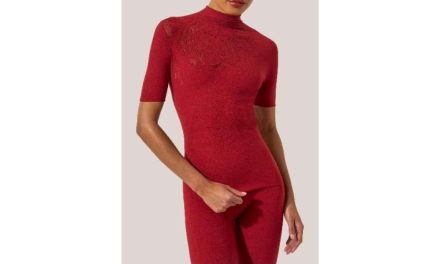 According to Bangladesh Bank’s report titled ‘Quarterly Review on Readymade Garments (RMG): October-December 2022-23’, knitwear accounted for the largest share of total exports in the last quarter, which is 47.32 percent. The external Economics Branch of the Bangladesh Bank Research Department regularly publishes Marginal Review Report on Garments.
According to Bangladesh Bank’s report titled ‘Quarterly Review on Readymade Garments (RMG): October-December 2022-23’, knitwear accounted for the largest share of total exports in the last quarter, which is 47.32 percent. The external Economics Branch of the Bangladesh Bank Research Department regularly publishes Marginal Review Report on Garments.
In the 1980s, woven garments such as shirts and pants were the main export products of Bangladesh. At that time, the share of woven garments in total exports was more than 90 percent. After that, the capacity of knitwear is also created in Bangladesh. Gradually, the participation of woven and knit garments in the total exports is equalized. However, this picture has changed in the last decade.
More than 80 percent of the products exported from Bangladesh in the world market are RMG. Garments are basically divided into two categories based on type—Woven Garment and Knitwear. Generally, t-shirts, polo shirts, sweaters, trousers, joggers, shorts are called knitwear. On the other hand, formal shirts, pants, suits, denim jeans are known as woven clothes.
According to the central bank’s review, knitwear garments have advanced the total exports in the last October to December quarter as well. The share of woven garments in the total exports was 38.56 percent. In addition, the share of leather and leather products was 2.09 percent, agricultural products 1.53 percent, jute products 1.27 percent, frozen food products 0.71 percent, chemical products 0.58 percent and other products were 7.93 percent.
Knitwear manufacturers say that the use of casual wear has started to increase since the Covid period. Also, the demand for people’s everyday clothes is also increasing. Most of these clothes are knitwear. Besides, the demand for man-made fibers is increasing in the international market, most of which are knitwear. As a result, the overall demand for knitwear is increasing in the global market.
Executive President of Bangladesh Knitwear Manufacturers and Exporters Association (BKMEA) Mohammad Hatem said, “Currently knitwear accounts for more than 55 percent of total garment exports. We are optimistic that knitwear exports will increase in 2024 once the war situation normalizes and buyers are also indicating the same.”
According to garment sector stakeholders, the decrease in woven share and increase in knitwear has been gradual, mainly due to the backward linkage capability of knitwear ensuring local supply of raw materials acts as a major strength.
According to the statistics of the Central Bank, in the financial year 2015-16, Bangladesh exported $34.24 billion of goods to the world market of which 43.04 percent were exports of woven garments and 39 percent were knitwear.
In 2018-19 financial year, Bangladesh exported $45.35 bn worth of goods, out of this 42.54 percent were woven garments and 41.66 percent were knitwear.
In the financial year 2019-20, goods worth of $33.67 bn were exported from Bangladesh, of which 41.70 percent were woven garments and 41.30 percent were knitwear.
In the last financial year, the total export of goods was $52.08 bn, of which 37.25 percent were woven garments and 44.57 percent was knitwear exports.
Garment exporters say buyers want to take orders quickly and the knitwear industry is better able to meet the demand for fast fashion than woven garments. This is possible as the majority of knitwear yarn is produced locally. In the case of ovens, there is also local capacity for raw materials, but still, a large part remains dependent on imports. As a result, faster delivery of customer orders is possible for knitted garments, compared to woven garments.





















